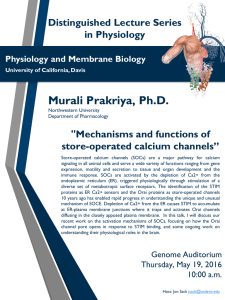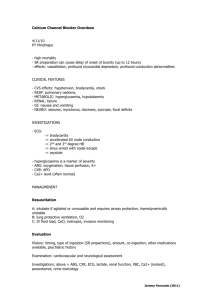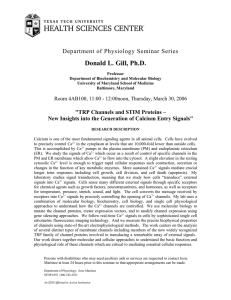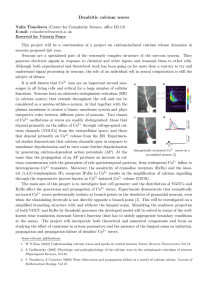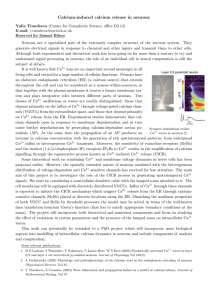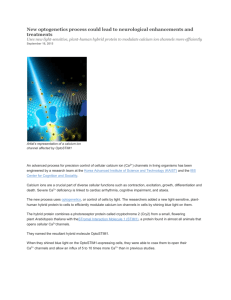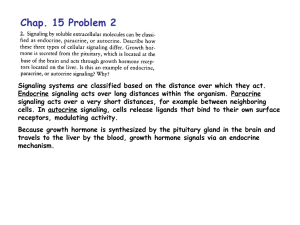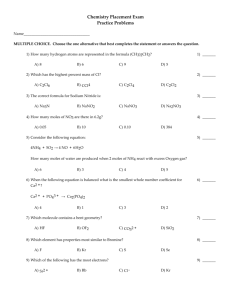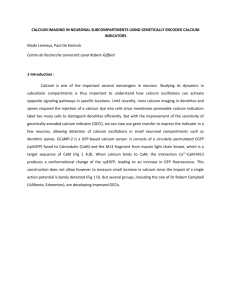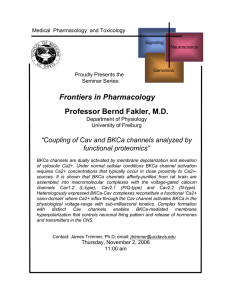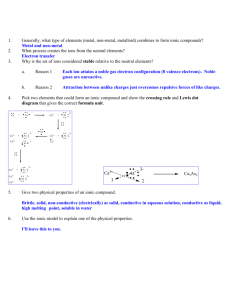V-gated Ca channels
advertisement
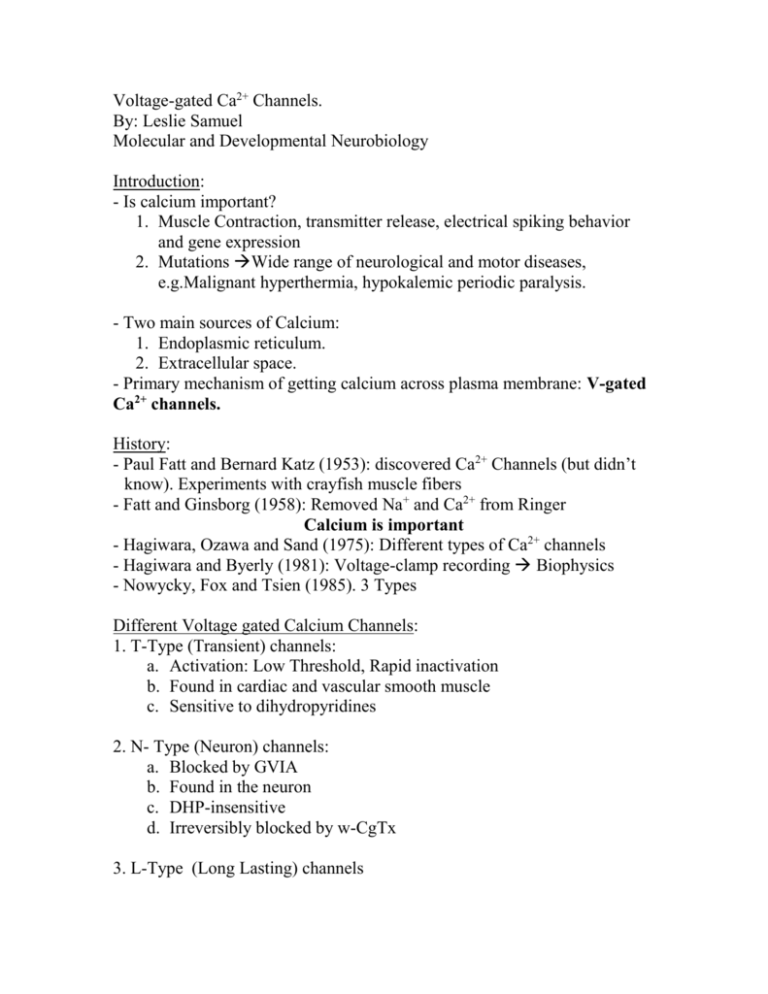
Voltage-gated Ca2+ Channels. By: Leslie Samuel Molecular and Developmental Neurobiology Introduction: - Is calcium important? 1. Muscle Contraction, transmitter release, electrical spiking behavior and gene expression 2. Mutations Wide range of neurological and motor diseases, e.g.Malignant hyperthermia, hypokalemic periodic paralysis. - Two main sources of Calcium: 1. Endoplasmic reticulum. 2. Extracellular space. - Primary mechanism of getting calcium across plasma membrane: V-gated Ca2+ channels. History: - Paul Fatt and Bernard Katz (1953): discovered Ca2+ Channels (but didn’t know). Experiments with crayfish muscle fibers - Fatt and Ginsborg (1958): Removed Na+ and Ca2+ from Ringer Calcium is important - Hagiwara, Ozawa and Sand (1975): Different types of Ca2+ channels - Hagiwara and Byerly (1981): Voltage-clamp recording Biophysics - Nowycky, Fox and Tsien (1985). 3 Types Different Voltage gated Calcium Channels: 1. T-Type (Transient) channels: a. Activation: Low Threshold, Rapid inactivation b. Found in cardiac and vascular smooth muscle c. Sensitive to dihydropyridines 2. N- Type (Neuron) channels: a. Blocked by GVIA b. Found in the neuron c. DHP-insensitive d. Irreversibly blocked by w-CgTx 3. L-Type (Long Lasting) channels a. Voltage activation at relatively depolarized voltages and slow inactivation b. Sensitive to dihydropyridines c. Reversibly blocked by w-conotoxin (w-CgTx) 4. P-Type Channels: a. DHP- and w-CgTX insensitive b. Sensitive to toxins in venom from funnel web spiders. Molecular Structure: 4 Subunits: 2. 1 Subunit a. Main subunit. Structurally similar to Na+ channel. b. Transmembrane c. Consists of 4 internal repeated domains d. Domain I: responsible for channel activation kinetics e. S4 makes up the voltage sensor - highly charged. f. P domain makes up the pore. 3. Subunit a. Membrane Spanning b. Regulatory function i. Increases amplitude of Ca2+ currents 4. Subunit a. Intracellular, cytoplasmic b. Regulatory functions 5. Subunit a. Membrane spanning. No cytoplasmic domain b. Regulatory functions i. Produce small increase in peak Ca2+ currents and activation rates ii. Shift activation to more hyperpolarized membrane potentials
